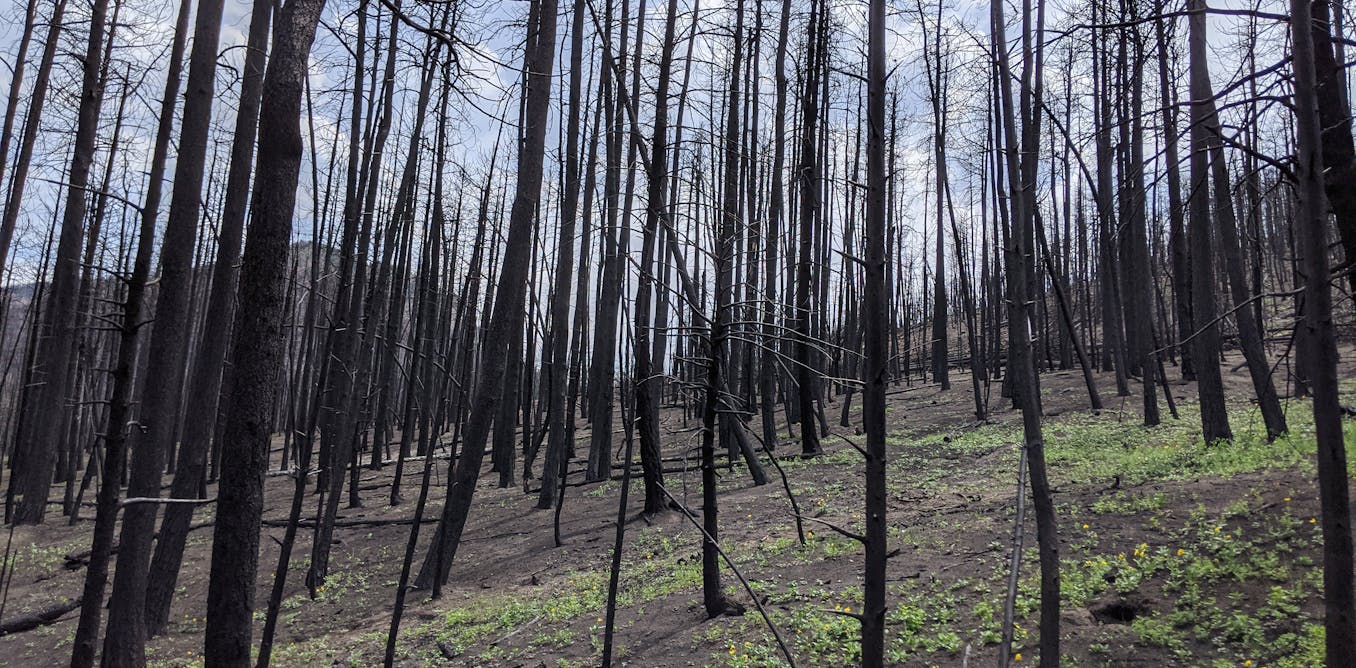The Vital Data You Flush Down the Toilet | Newsha Ghaeli | TED
The TED talk titled “The Vital Data You Flush Down the Toilet” by Newsha Ghaeli explores the fascinating world of wastewater epidemiology and the potential it holds for revolutionizing public health in cities across the globe. Ghaeli delves into the idea that valuable health data is literally being flushed down the toilet every time we use the restroom, as urine and stool contain critical information about our health and well-being. Wastewater epidemiology involves the collection and analysis of sewage to detect infectious diseases, chemical markers for commonly consumed drugs, and bacteria that live in our collective microbiomes.
Ghaeli emphasizes that sewage data is naturally aggregated and anonymized, making it the perfect data dump for gathering insights into the health of entire communities without compromising individual privacy. She illustrates the power of wastewater epidemiology by discussing its role in monitoring COVID-19 activity in communities, as well as its use in addressing the opioid epidemic in a North Carolina town, leading to a significant reduction in overdoses.
The talk highlights the tremendous potential of utilizing sewage data to inform real-time improvements in social policy, environmental management, and health equity. Ghaeli encourages the audience to consider the wealth of data generated in cities every day, from phone calls and package deliveries to health care information, and advocates for the thoughtful collection and analysis of this information to address pressing urban challenges.
Overall, Ghaeli’s TED talk sheds light on the transformative impact of wastewater epidemiology and serves as a call to action for leveraging big data to create smarter, healthier, and more resilient cities.
Watch the video by TED
Has it ever occurred to you, as you walk down the street, just how much data is flowing beneath your feet? A wealth of information on our health and our well-being is running through our city sewers, and we’re all contributing to it every single time we use the toilet. Think about it.
Everybody pees and poops, and we know that urine and stool contain a rich source of information on our health and our well-being. Our doctors look at it all the time to analyze for a variety of things. Now, every time you flush, you’re sending this valuable information down into our sewers,
Where it’s mixing with waste from hundreds of thousands of other people. Once collected, it looks something like this. This tiny sample comes from a wastewater treatment plant that represents more than one million people. And from it, we can detect all sorts of things about that community:
The infectious disease viruses that are circulating in our bodies, chemical markers for the drugs that are most commonly consumed. And we can analyze for all the bacteria that live in our collective microbiomes. Now, if this sounds too close for comfort, just consider all the personalized data that you’re parting with every day
When you use gadgets like your smartphone or your smart watch. What’s amazing about sewage is that it’s naturally aggregated and anonymized. Once flushed, your waste is mixing with that of thousands and thousands of people, so there’s actually no way to tie any information from here back to a specific person.
Put differently, it’s the perfect data dump. The thoughtful collection and analysis of sewage has the potential to radically improve health outcomes in cities around the world, and it’s a growing field called “wastewater epidemiology.” And wastewater epidemiology is but one example of all the big data that we’re generating in our cities today.
Consider all the data that you generate with every phone call, package delivered, mile driven. It’s data from cameras, sensors, drones, air quality, water quality monitoring, and the vast amounts of information generated by our health care and our educational systems. All of this information, these digital breadcrumbs,
Tell us unique stories about our cities and the way that we live our lives. The thoughtful collection and analysis of this information has the power to inform real-time improvements to things like social policy, environmental management, health equity and more. As an architect, I believe that we need to harness
The hundreds of millions of terabytes of data that we’re generating in our cities each and every day. And this is important now more than ever, because for the first time in human history, more than half of all people live in cities. By 2050, this number will grow to nearly seven in 10 people.
Now just think about what that means for a second. It means our biggest crises, from climate change to pandemics to growing inequality, are going to hit cities first and hardest. But the era of big data offers an opportunity for new and creative solutions to tackle these problems.
So let’s dive into the opportunity presented by wastewater epidemiology. Some of you may have heard of it as it gained a lot of popularity and attention during the COVID-19 pandemic. In 2020, research groups from around the world began detecting SARS-CoV-2 RNA, the virus that causes COVID-19, in sewage samples.
I was on one of those teams. We and others showed that you can actually use sewage as an accurate representation of COVID activity in our communities. Let me show you what I mean. Here we’re looking at a time series over the course of the pandemic. So from March 2020 through just last week.
The blue line represents COVID virus concentrations in sewage samples from across the United States. In yellow, we see COVID clinical case data. For the first two years of the pandemic, case data was very reliable. People were getting PCR-tested all the time. During those two years, the two data sets tracked very well.
That was great. It meant that sewage was also reliable and an accurate representation of disease burden. However, over the past year and a half to two years, we’ve seen a divergence in those data sets. People just aren’t getting COVID-tested nearly as often. Sewage, on the other hand,
Doesn’t require us to access health care services. We’re all represented just by peeing and pooping. Throughout the pandemic, we and others also showed that sewage is predictive and a leading indicator of new COVID clinical cases. This is because infectious disease viruses incubate in our bodies before we develop symptoms or go get tested.
Meanwhile, we’ve been excreting the virus for days. During COVID, it was shown that sewage was anywhere between one to three weeks leading indicator for clinical cases. Now I’m going to show you an example of one time that this led to a big community-impacting decision. Here, we’re looking at data from the Boston area
During the Omicron wave. In December 2021, towards the end of the month, COVID cases began to skyrocket across the country and didn’t slow until the end of January. Boston Children’s Hospital, though, was ready. They had been looking at Boston area sewage and saw the sewage levels go up weeks earlier,
So they proactively postponed all non-emergency medical procedures. They wanted to free up resources so that they could adequately respond to the incoming wave of hospitalizations. Now wastewater epidemiology has been used to tackle other pressing health issues as well. Before the pandemic, the biggest public health crisis in the United States
Was our growing drug epidemic. Drug overdoses were growing year over year and had become the leading cause of accidental death for Americans under the age of 50. In 2018, a small town in North Carolina had seen overdoses go up, and they wanted better information, better data to know what to do about it,
What was driving this trend and how to respond. So we turned to the sewers, and together with the mayor’s office, we began to analyze sewage samples from several sites across the city and were able to show that prescription opioids were the drug most commonly consumed, not injectable opioids. Equipped with this data,
The city diverted resources from needle exchange sites and put that money into medication takeback programs instead. They advertised and held dozens of town halls where they talked about the adverse effects of prescription painkillers. That year, the city saw a 40 percent reduction in overdoses, and for the first time,
They had engaged their community in a dialogue around drugs, addiction and overdose. Now imagine if every city around the world had access to this sort of information. Before the pandemic, wastewater epidemiology was a tiny field with no more than a dozen experts worldwide. Today, 72 countries have used wastewater monitoring to understand COVID-19.
And it’s time that we leverage these investments to monitor for all sorts of other things as well. Imagine knowing when influenza and RSV are going to peak every year so that our hospitals can prepare. Imagine mapping nutrition in our cities so that we can identify food deserts and understand social determinants of health.
Imagine identifying superbugs and antibiotic resistant genes as they emerge in our communities. Imagine preventing the next pandemic before it happens. In the way that cholera prompted London to build modern-day sewer systems, and poor health in the tenements of New York City were one of the catalysts behind the building of Central Park,
This is how our cities can learn from COVID-19. And this is precisely how we can foster a new, intelligent kind of urbanization. For years now, scientists, policymakers, architects and urban planners have been harnessing the power of technology and big data to future-proof our cities. Over the last decade,
Chief technology officers have been appointed in cities around the world. Roles once reserved for the boardrooms and hallways of Silicon Valley are now finally open in city hall. So next time you swipe your credit card, take a ride in a taxi or tap your MetroCard, just consider how you’re contributing
To your city’s ever-growing digital infrastructure. And next time you use the toilet, just remember, you’re doing your civic duty. Thank you.
About TED
The TED Talks channel features the best talks and performances from the TED Conference, where the world’s leading thinkers and doers give the talk of their lives in 18 minutes (or less). Look for talks on Technology, Entertainment and Design — plus science, business, global issues, the arts and more. You’re welcome to link to or embed these videos, forward them to others and share these ideas with people you know.
Video “The Vital Data You Flush Down the Toilet | Newsha Ghaeli | TED” was uploaded on 01/05/2024 to Youtube Channel TED



















![MONTAGE SWIMWEAR: 12 Designers, 1 Show, 1 Big Reveal | Miami Swim Week 2025 [4K] – PART 1 MONTAGE SWIMWEAR: 12 Designers, 1 Show, 1 Big Reveal | Miami Swim Week 2025 [4K] – PART 1](https://i.ytimg.com/vi/MKDhVDFwOes/maxresdefault.jpg)















